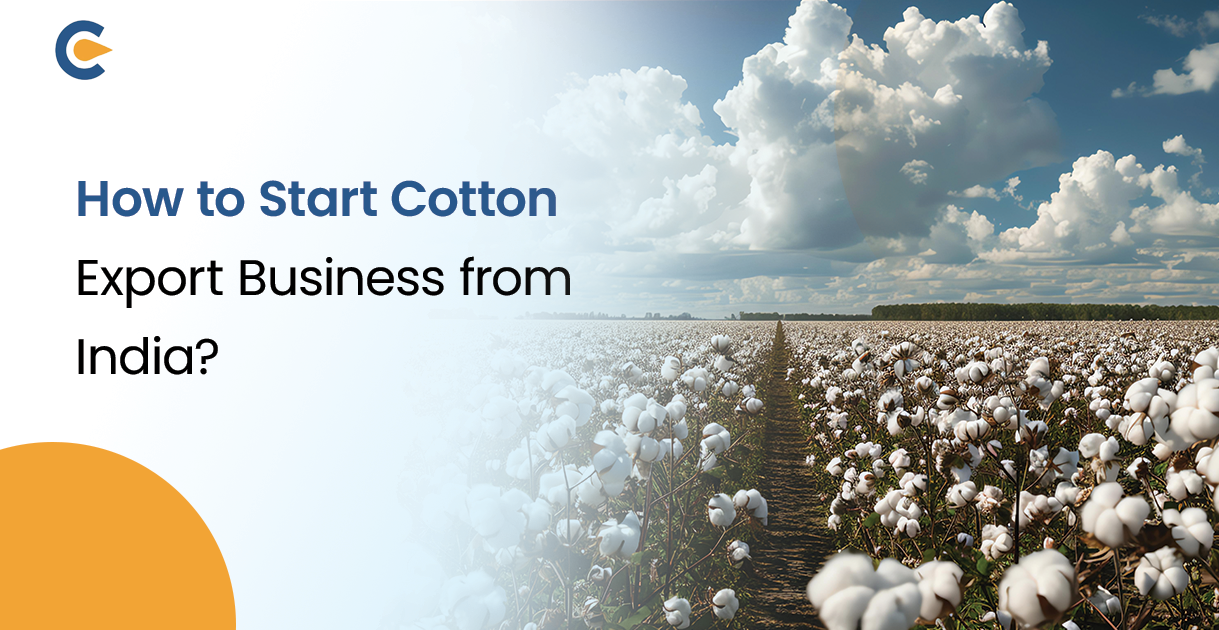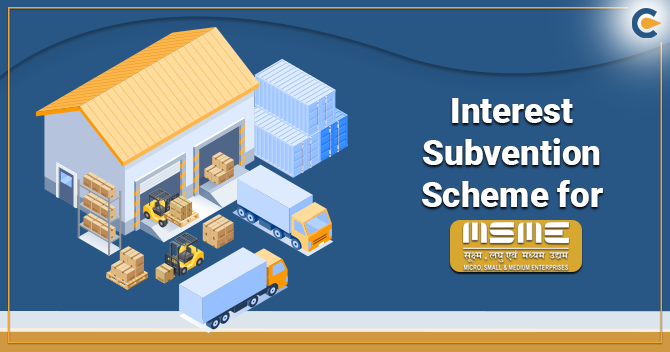India stands as one of the foremost producers and exporters of cotton Internationally, rendering it a major participant in the international cotton export business. The cotton export sector in India contributes substantially to the nation’s economy, creating employment prospects and earning foreign currency.
The cotton export business in India is supported by a robust infrastructure, encompassing contemporary ginning and pressing facilities, textile mills, and ports for shipping.
The cotton industry in India is primarily concentrated in the states of Gujarat, Maharashtra, and Andhra Pradesh, with Gujarat being the largest cotton producer in the country.
What is a Cotton?
We are aware that cotton is a fibre we derive from nature; hence, it is a natural fibre. It is a versatile substance that can be employed for producing various items like mats, rugs, brushes, ropes, and other goods or substances that are qualified to be used for households and industries.
Cotton qualifies as a renewable and environment-friendly material because it is biodegradable and can undergo the recycling process.
As one of the primary crops cultivated globally, cotton is abundant in nature and economically efficient in production. Thus, products manufactured from cotton are relatively inexpensive and cost-effective.
History of Cotton Export Business in India
India’s association with the cotton export business traces back to ancient times, with the country being renowned for its superior cotton textiles. The cotton export business has played a pivotal role in shaping India’s economic structure and in making sure to establish a global trade presence.
The Roots of Indian Cotton Cultivation
Cotton cultivation in India can be traced back to the Indus Valley Civilization, dating back to 3000 BC. The subcontinent’s favorable climatic conditions and fertile soil contributed to the flourishing of cotton farming. Over the years, Indian cotton became highly sought after for its exceptional quality, paving the way for a thriving export trade.
The Rise of the Cotton Export Business
The advent of the British East India Company in the 17th century marked a significant milestone in the cotton export business in India. The company recognized the immense potential of Indian cotton and actively promoted its export to European markets. During this period, we have witnessed the establishment of trade routes and the development of infrastructure to facilitate the cotton export business.
During the Industrial Revolution, the demand for Indian cotton increased dramatically, fueling the growth of the export industry. India’s cotton export business expanded rapidly, with major ports like Bombay (now known as Mumbai) and Calcutta (now known as Kolkata) serving as prominent hubs for the international cotton trade.
To this day, the cotton export business plays a crucial role in India’s economy, contributing significantly to the nation’s foreign exchange earnings and providing employment opportunities to millions of individuals involved in the cotton supply chain.
Driving Factors of Cotton Export Business in India
India’s exports of cotton are driven by multiple elements, encompassing the high global demand for the nation’s cotton due to its superior quality, diverse varieties, and competitive pricing strategies. Moreover, India’s geographical proximity to major textile production centers like China, Bangladesh, and Vietnam renders it a favored supplier for numerous textile enterprises.
1- Quality and Variety of Cotton Offered in India
The cotton cultivated in India is renowned for its exceptional quality and diverse range of varieties, catering to the specific requirements of various textile applications. This commitment to quality and variety has contributed significantly to the international appeal of Indian cotton.
2- Competitive Pricing:
Indian cotton enjoys a competitive edge in the global market due to the nation’s cost-effective production methods and efficient supply chain management. This pricing advantage has played a crucial role in sustaining the demand for Indian cotton among cost-conscious textile manufacturers worldwide.
3- Strategic Geographical Location:
Proximity to Major Textile Hubs India’s strategic geographical location, near major textile manufacturing hubs like China, Bangladesh, and Vietnam, offers a logistical advantage. This proximity facilitates timely and cost-effective delivery of Indian cotton to these textile powerhouses, cementing India’s position as a preferred supplier.
4- Established Trade Routes:
Over the years, India has developed well-established trade routes and partnerships with neighboring countries and regions, enabling seamless cotton export operations. These trade connections have further solidified India’s position in the global cotton export market.
By leveraging its strengths in quality, variety, competitive pricing, and strategic location, India has emerged as a dominant force in the global cotton export business, catering to the ever-growing demands of the textile industry worldwide.
Steps to be Followed for Cotton Export Business
Before exporting cotton and its associated products from India for cotton export business, the following steps must be carefully considered and following:
- Obtaining Requisite Licenses and Registrations
Exporting cotton products necessitates acquiring the necessary licenses and registrations, such as the Import Export Code (IEC), Registration Cum Membership Certificate (RCMC), and GST registration.
- Identifying the Market and the Target Customers
It is imperative to identify the target market and potential customers for cotton products. Researching the demand, competition, and regulations within the target market is crucial to ensure a successful export strategy.
- Determination of Cotton Products for Export
Cotton products are available in various types and grades. Identifying the product with high demand in the target market and ensuring its compliance with the quality standards and regulations of the destination country is essential.
- Procurement of Raw Materials and Manufacturing of Cotton Products
Procuring raw materials like coconut husks and cotton fibres for cotton products can be done by sourcing from local suppliers. It is essential to ensure that the manufacturing process adheres to quality standards and meets the requirements set by the destination country.
- Packaging and Labeling of Products
Proper packaging and labeling are paramount in exporting cotton products. The packaging must be sturdy, and the labeling must comply with the regulations of the destination country.
- Shipping and Packaging of the Product
Selecting a reliable shipping and logistics provider who can efficiently handle the export process and ensure timely delivery of the products to the destination country is crucial.
By following these steps meticulously, exporters can navigate the complexities of exporting cotton and its allied products from India, ensuring a smooth and successful export process.
Function of Cotton Export Promotion Council (TEXPROCIL) in Cotton Export Business
The Cotton Export Promotion Council is a governmental body that was established in 1954 to foster and advance the cotton export business in India. Texprocil’s primary responsibilities encompass the following services:
- Market Expansion of Cotton Export Business
- Export promotion of the Cotton Export Business and
- Extending support services to exporters of cotton.
In addition to this, it offers a wide range of services to exporters, including market intelligence, export documentation facilitation, quality certification, and financial assistance for export promotion activities.
Registering with TEXPROCIL can confer numerous advantages to cotton exporters, such as access to market information, participation in export promotion activities, financial assistance, and other support services.
Essential Documents Required for Cotton Export Business
The list of essential documents required for the cotton export business is as follows:
- Importer-exporter code issued by the Director General of Foreign Trade (DGFT).
- Trademark registration certificate if it is available.
- e-RCMC membership of the Cotton Board (TEXPROCIL) is mandatory.
- Proof of the business i.e., Company Incorporation Certificate/Partnership Deed.
Market Leaders in Cotton Export Business in India
The list of Market leaders in the cotton export business in India is as follows:
- SCM Garments Private Limited.
- Shahi Exports Private Limited.
- H.D. Textiles.
- Nandan Denim Limited.
- Trident Limited.
- Adinath Trading Company (ATC).
- Saanvi Inc.
- Taen Life Impex.
- Vinod Textile.
- Super Agri Export.
To Wrap Up
In summary, the export of cotton from India occupies a crucial role in the global textile supply chain, making a substantial contribution to the nation’s economy and sustaining the livelihoods of millions of agriculturists. Despite encountering various obstacles, the Indian cotton industry persists in flourishing, propelled by its rich legacy, high-quality produce, and governmental support. By addressing existing constraints and embracing innovation, India can further solidify its position as a preferred supplier of cotton to the world.
Frequently Asked Questions
What is the fee for TEXPROCIL registration?
The fee for member exporters is INR 20,060 and for registered exporters 10,620 respectively.
What are the documents required to start a cotton export business from India?
These are the following documents required to start a cotton export business in India:
– Company Incorporation/partnership firm/registration certificate.
– IEC code.
– RCMC from TEXPROCIL.
– GST certificate.Do exporters of cotton products require IEC registration?
As per the guidelines of DGFT exporter-importers of all kinds of products IEC certification code.
Which country India exports the most cotton to?
As per cotton export data, cotton exports from India to approximately 159 nations throughout the world. Between April 2021 and February 2022, Bangladesh, China, and Vietnam were India's top cotton imports.
What is the role of TEXPROCIL in the cotton export business?
TEXPROCIL provides various benefits to its members, and some of them are as follows:
– Market research.
– Technology
– Funds.
– Helps find new markets.
Read Our Article: 17 Steps To Start A Small Business











